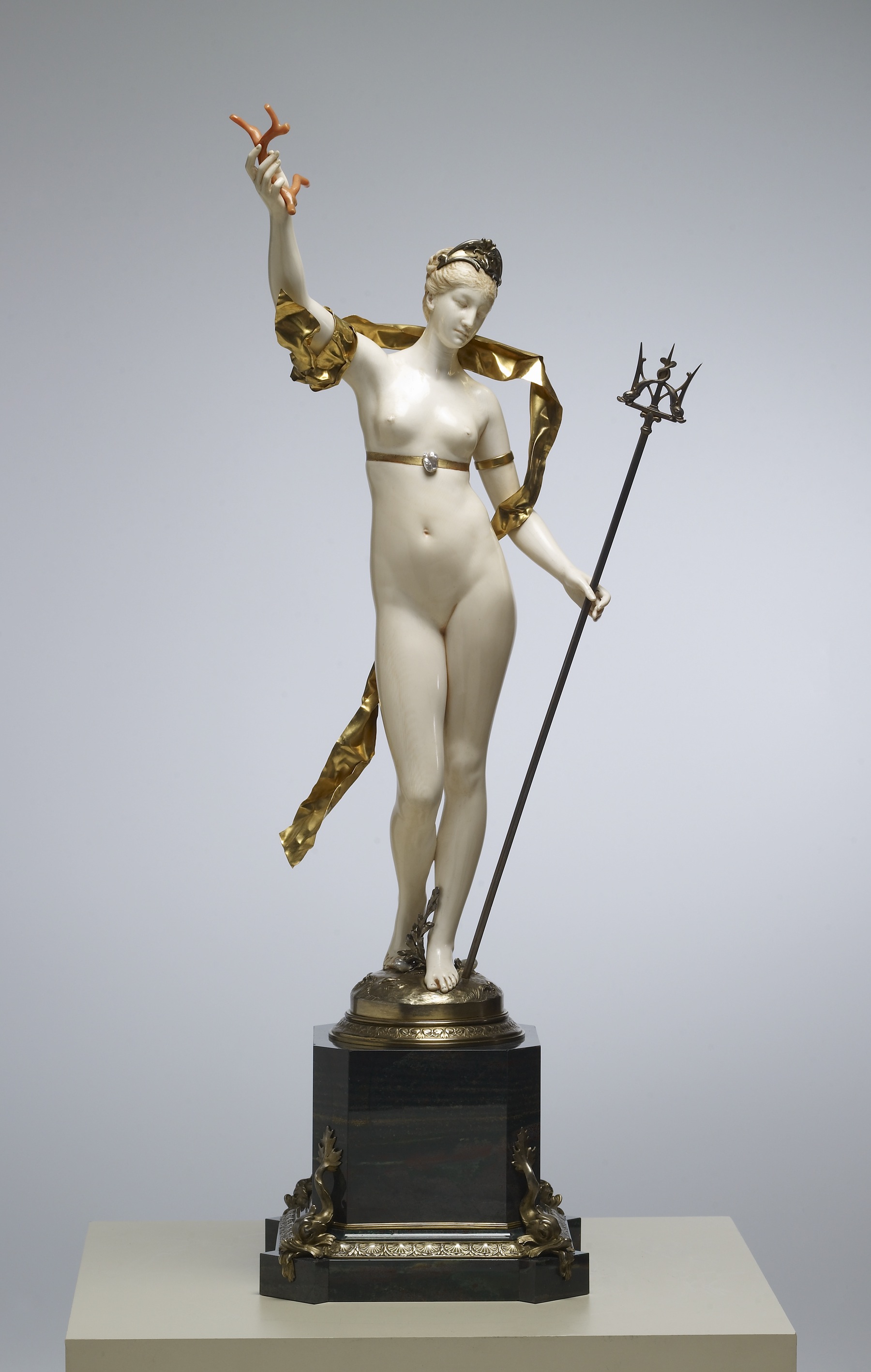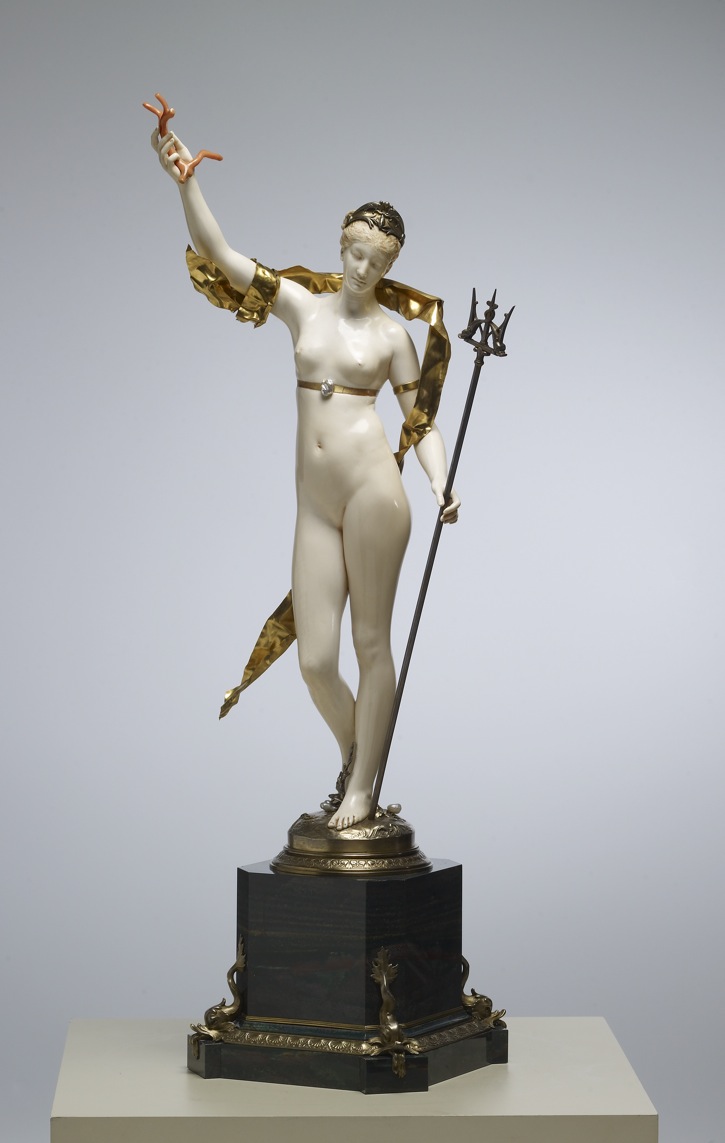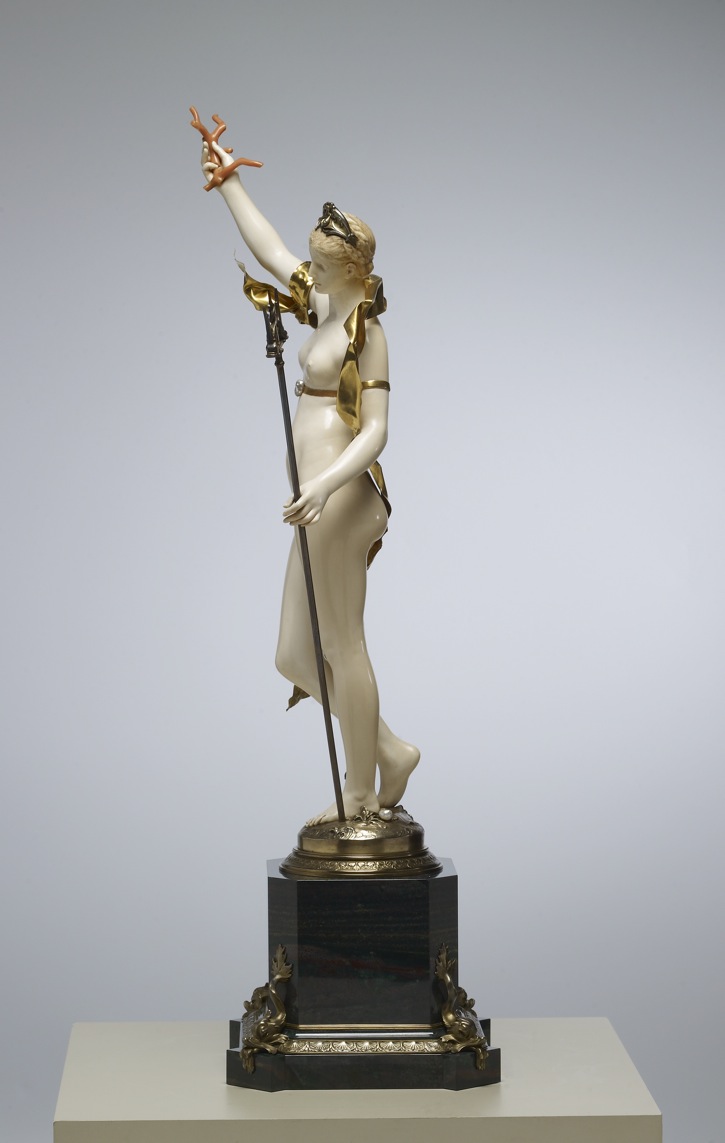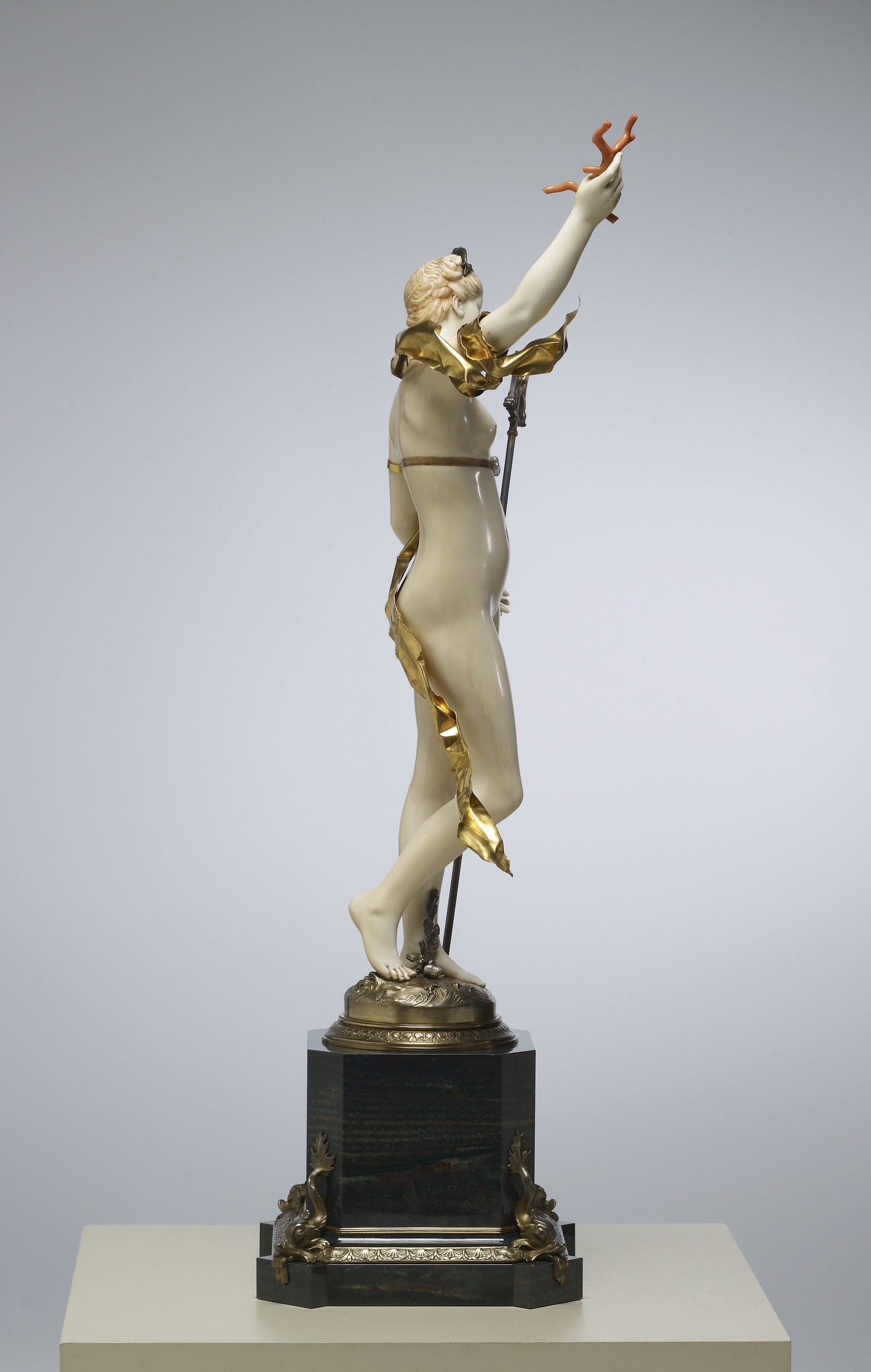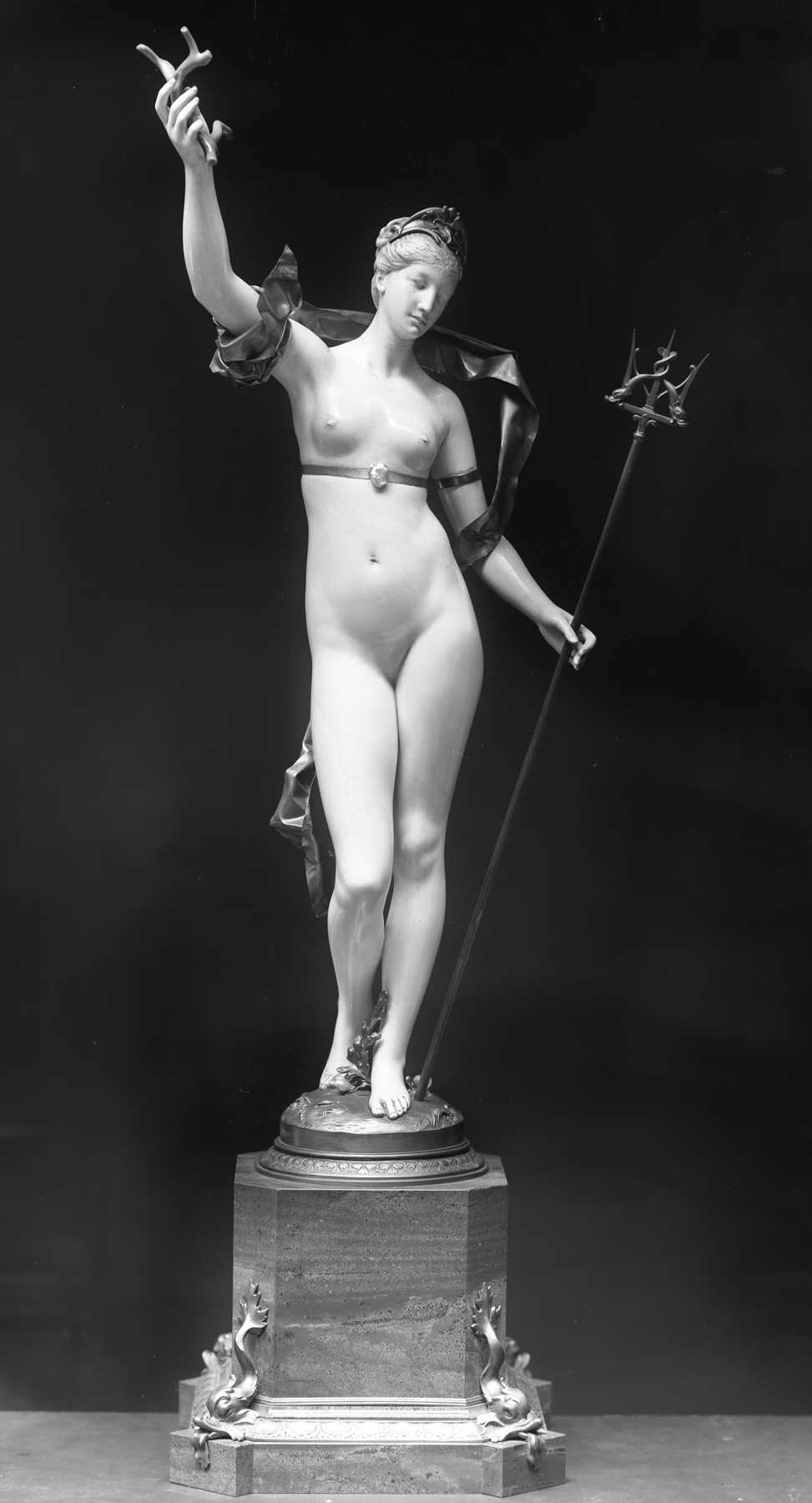Amphitrite
(18th and 19th Centuries )
The statuette of this goddess of the sea was designed by the sculptor Marius-Jean-Antonin Mercié to be cast in silver as the centerpiece for a table of the Duke of Santonia in 1878. Subsequently, Christolf et Cie., a silver company, had several ivory statuettes carved by Emile-Philippe Scalliet based on Mercié's model. This example was exhibited at the Exposition Universelle held in Paris in 1900.
The figure is made from three pieces of carved ivory joined together. The two arms are separate sections, with the joins concealed by metal adornments at the mid-upper arms. A pearl is attached to the figure's chest, and two more can be found on the metal base. Four porpoises decorate each corner of the jasper base.
Inscription
Provenance
Provenance (from the French provenir, 'to come from/forth') is the chronology of the ownership, custody, or location of a historical object. Learn more about provenance at the Walters.
Exposition Universelle, Paris, 1900; Christofle & Cie., Paris [date and mode of acquisition unknown]; Henry Walters, Baltimore, 1900, by purchase; Walters Art Museum, 1931, by bequest.
Exhibitions
| 2014-2016 | From Rye to Raphael: The Walters Story. The Walters Art Museum, Baltimore. |
| 1983-1984 | Ivory: The Sumptuous Art. The Walters Art Gallery, Baltimore. |
Geographies
France (Place of Origin)
Measurements
H: 27 1/16 × W: 11 × D: 9 1/16 in. (68.7 × 28 × 23 cm)
Credit Line
Acquired by Henry Walters, 1900
Accession Number
In libraries, galleries, museums, and archives, an accession number is a unique identifier assigned to each object in the collection.
In libraries, galleries, museums, and archives, an accession number is a unique identifier assigned to each object in the collection.
71.450

